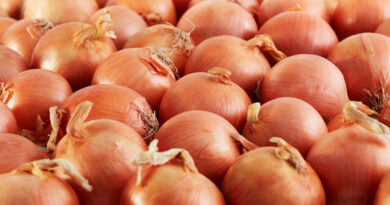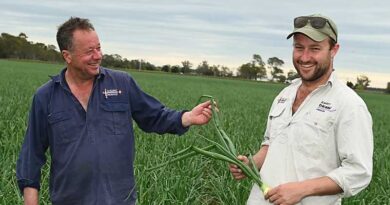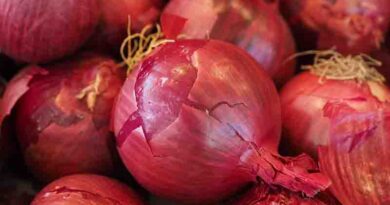Stong Onion Crop in Hawke’s Bay
22 April 2024, NZ: After losing most of the onion crop last year in Cyclone Gabrielle, Hawke’s Bay growers are pleased with what has been a good growing season.
In the main there were no major weather events, the crop established well and was then followed by consistent and moderate rainfall and lovely sunny Hawke’s Bay weather.
Chris Zuiderwijk, Bostock growing operations manager, says the onion crop is planted in July to August and harvested between February and early April. The long growing season makes it a technically difficult crop to grow.
“You have a very spindly little onion. When the onions are very small they are very susceptible to rainfall events. And then you need to get through your weed control, which is the most difficult period. They are in the ground a long time, vulnerable to the elements over winter and early spring and take a lot of effort to grow.”
For the more than 200ha of onions that Bostock grows, volumes this harvest are above average.
“For Hawke’s Bay, 75 tonnes would be average, which is really good. That is better than normal. And we got above average yields this year.”
One of the issues that can hamper crops is called ‘capping off’. Because of Hawke’s Bay’s clay soils, any heavy rain followed by hot sun can result in a hard crust that prevents the seedling breaking through.
Another issue is Stemphylium, a mould disease that can hit crops quite hard when the levels of humidity spike through November. But this was very limited this year, he says.
“The back to normal better Hawke’s Bay conditions, with lower humidity days has helped,” he says.
Agronomist Dereck Ferguson says the onion crop the year previous had been doomed from the get-go.
It started with a tough wet winter which prevented some growers getting all the seedlings in the ground, perhaps only 60 percent of what was wanted. Then there was a hailstorm on Christmas eve that took out much of the crop, and then through January the weather trouble continued.
“Gabrielle was just like another nail in the coffin at that point and we lost even more.”
This year’s crop is a different bucket of onions, so to speak.
The growing conditions were good, but not without challenges. Growers still encountered mildew and Stemphylium, but this dried up and growing conditions tracked well leading up to Christmas, he says.
“The issue we faced from then was bolting, relating to cold snaps back in spring. The plants mistakenly think they have gone through vernalisation in winter and start sending up stems and flowers, so instead of an onion bulb you get seeds, which makes the bulb unsalable.”
Normally growers might get one to three percent bolting in a paddock, but this season the numbers were far higher – and at the end of the day, that means a haircut for the grower both from yield loss and the cost of pulling them out.
“That was a bit of a downer on the season, but this was to do with our climatic conditions and when we planted,” Dereck says.
At the time of writing, harvest is ongoing.
Dereck thinks it’s shaping up to be a pretty good year with respectable yields, and if the market receives the products well, then growers will be happy.
James Kuperus, chief executive of Onions NZ, agrees that the crop quality is very good.
“Grower resilience has certainly been tested, not just with the cyclone but also continued higher rainfall last year, so to come out the other side of last season like we have with much more favourable conditions is good news.”
Getting a good return for such a high quality product is the next challenge, he stresses, with demand sluggish in some key export markets.
Onions NZ is also involved with continuing research into the impact of last year’s severe weather.
“There is some ongoing work trying to understand the long-term effects of that high amount of sediment on the soil.”
Also Read: UPL receives ‘Well-Known Trademark’ by the Indian Trademark Registry
(For Latest Agriculture News & Updates, follow Krishak Jagat on Google News)















